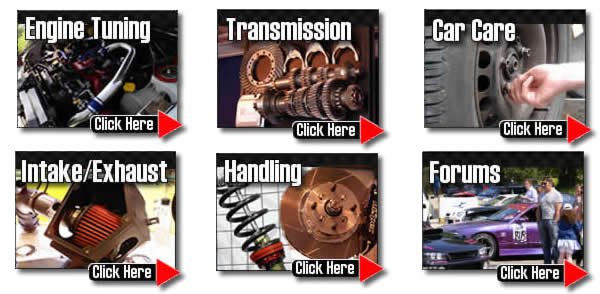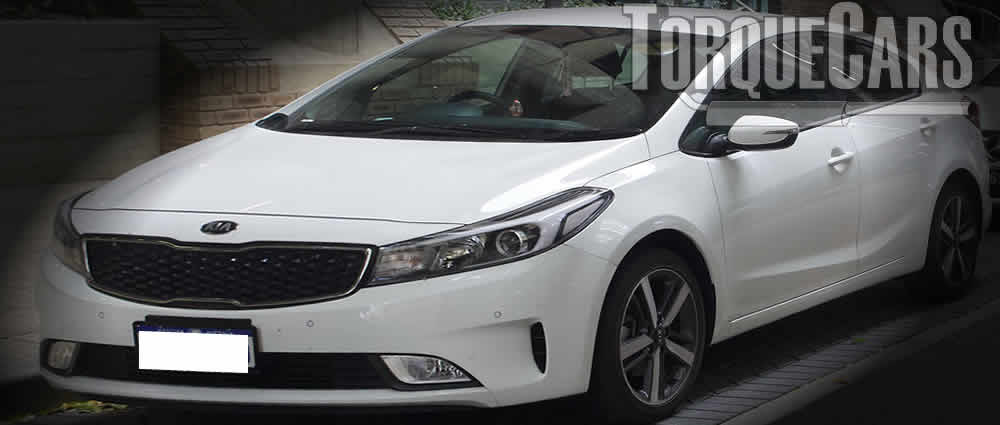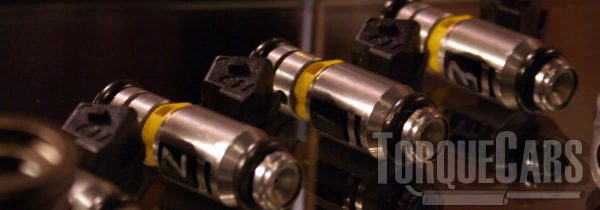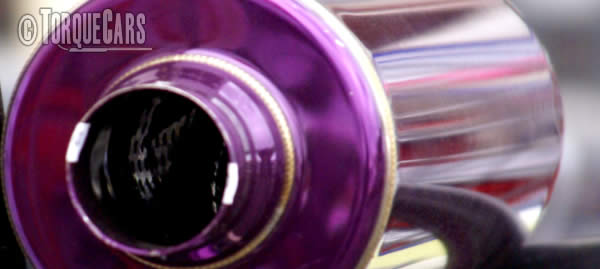Tuning the Kia Forte/Cerato
"Cheers for reading our Kia Forte/Cerato tuning guide."
The Forte/Cerato is a great tuning project to take up your weekends. With the right mods your Forte/Cerato can be transformed into a fun car. Don't waste money, do your homework and follow our unbiased guides to each performance upgrade to avoid wasting money.
With a few sensible sports parts like ECU maps, turbo upgrades and camshafts you will substantially enhance your driving experience.
In this article we look at Forte/Cerato tuning and point out the greatest upgrades.

Handling/Suspension upgrades
Improving the handling for people often first priority in your Forte/Cerato tuning project.
We found that most Forte/Cerato factory suspension setups need tweaking, a few degrees of toe (set some toe out to improve cornering or use toe in for better stability) and you only need around around 1.5 degrees, and a bit of negative camber will often benefit your cornering and handling.
We suggest that you fit modified suspension and lower the car by 23mm - 39 mm. Larger drops require arch work - especially on models already equipped with performance suspension.
Putting meatier brake discs and better quality pads will make for greatly improved stopping.
Please note that race brake pads can grind and will need to be really hot before they start to work.
In every day driving the brakes are only applied now and then and will not be effective so source brake pads which don't need to be really hot.
Turning our attention to the Forte/Cerato's engine we need to get a bit more power out of the top end.
Sadly with smaller engine sizes you are wasting your time spending money on modifications, so if this applies to you get yourself an engine swap then apply the following mods.
Power mods.
The following motorsport parts are usually installed by our members, decide how far you want to push your car before you get going.

First generation (2009–2013)
- 1.6 L Gamma G4FC MPi I4 (petrol)
- 2.0 L Theta II MPi I4 (petrol)
- 2.4 L Theta IIMPi I4 (petrol)
- 1.6 L Gamma G4FC MPi I4 (petrol/LPG)
- 1.6 L U-Line D4FB CRDi I4 (diesel)
Second generation (2014–2018)
- 1.6 L Gamma G4FC MPi I4 (petrol) 128hp
- 1.6 L Gamma G4FJ MPi turbo I4 (petrol) 201hp (Koup Coupe/Hatchback)
- 1.8 L Nu MPi I4 (petrol) 148hp (Sedan only)
- 2.0 L Nu MPi I4 (petrol) 159hp
- 2.0 L Nu GDI I4 (petrol) 173hp
Third generation (2019–)
- 1.6 L SmartStream G Gamma II MPi I4 (petrol) 123ps
- 1.6 L Gamma II MPI turbo I4 (petrol) 204ps
- 2.0 L Nu MPi I4 (petrol) 147hp
Getting the right modified modifications for your planned usage of the car is a time and money saver. Stage 3 competition upgrades just won't work well on the road difficult in stop start traffic.
Modifying to STAGE 1:
Lighter flywheel, Panel air filter, Suspension upgrade (drop 23mm - 39 mm.), Remap, Alloy wheels, Sports exhaust.
Modifying to Stage 2:
Ported and polished head, Fast road cam, fuel pump upgrades, high flow fuel injector, Power/Sport clutch.
Modifying to Stage 3:
Engine balancing, Competition cam, Internal engine upgrades (pistons/head/valves), Sports gearbox, Adding or upgrading forced induction (turbo/supercharger).
Your targets when modding your car should be a flat and wide torque output. You don't want all the torque to be at the top end unless you are creating a motor sport car.
In this article we shall give a limited introduction to the best mods for your car, but we'd encourage you to spend some time on the site looking into the details of each type of performance upgrade.A fast road cam will be one of the best NASP power modifications you can do with a single part fitted to your engine.
The exhaust and intake valve durations play a big role in your cars power band, but be careful here, getting this wrong can upset the idle and make the car awkward to drive in traffic. You'd need to follow a camshaft upgrade with other mods and finish with a remap to fully realise your gains.
When pushing up the power you will need to pay attention to to the fuelling. More power needs more fuel.
If you find you get flat spots and surges after your tuning parts you should check the fuelling and try a higher octane fuel as well.  Uprated injectors will enable you to supply sufficient fuel to the engine.
Uprated injectors will enable you to supply sufficient fuel to the engine.
If have increased your fuelling with bigger injectors you will also need to get a bigger fuel pump to supply it.
Intake and Exhaust Tuning.
Now we move on to the intake and exhaust and ensure proper flow through the engine.  Please note that WE DO NOT FEEL YOU GET POWER GAINS FROM INDUCTION KITS, unless you have tuned your car massively and are finding that the standard air intake has become limited.
Please note that WE DO NOT FEEL YOU GET POWER GAINS FROM INDUCTION KITS, unless you have tuned your car massively and are finding that the standard air intake has become limited.

Maximum power gains come from a full induction kit with a cold air feed on heavily tuned engines, this can be sited within an air box but a panel filter should suffice for most applications. TorqueCars suggest you use a panel air filter as these are easy to clean and maintain and generally perform better than paper ones.
Do not go with the largest exhaust you can buy this will slow the exhaust rate - the best for power gains are usually between 1.5 to 2.5 inches. It is the shape and material more than the bore size.
Head work including a head port and polished and 3 or 5 angle valve job will really help to release the potential of the engine. Your clutch can fail as you increase the power if it starts to complain and the standard clutches are only ever good for power gains of up to 43%. Fit a performance clutch to avoid power losses through the transmission. The best mods in our opinion for your Forte/Cerato are remaps, sports camshafts and induction improvements.
Remaps offer phenomenal power gains on all turbo charged cars. On NASP engines the benefits are doubtful. However a flashed ecu on a NASP engine will help unleash the potential if you have done a lot of mods. Adding forced induction will see significant power gains but this is usually too expensive to be cost effective. Turbos are generally harder to add than a supercharger. Turbos increase power in increasing proportion to increasing engine speed and this can make mapping difficult.
The nice proportional boost and rpm characteristics of the supercharger make them easier to map. Alternatively you could install water injection to control knock.
Alloy wheel upgrades.
The benefits of alloy wheels include a lower unsprung weight and more efficient brake cooling via the extra air flow they allow. Further improvements can be made to your cars handling with the addition of soft compound tire. The drawback to large alloy wheels on your Forte/Cerato is that you alter your final drive ratio and this will have a detrimental effect on performance.
Due to this aim to keep the overall rolling diameter of the wheel the OEM setup. In all cases not going larger than 16 inches.
For more information on Tuning your car please join us in our friendly forum where you can discuss Forte/Cerato options in more detail with our Forte/Cerato owners. It would also be worth reading our unbiased Kia tuning articles to get a full grasp of the benefits and drawbacks of each modification.
Please help us improve these tips by sending us your feedback in the comments box below.
We love to hear what our visitors have got up to and which mods work best for them on each model of car. Comments are used to improve the accuracy of these articles which are continually updated.
If you liked this page please share it with your friends, drop a link to it in your favourite forum or use the bookmarking options to save it to your social media profile.
Check out TorqueCars new YouTube channel, and see their awesome new content...
Feedback
Please use our forums if you wish to ask a tuning question, and please note we do not sell parts or services, we are just an online magazine.
Help us improve, leave a suggestion or tip
